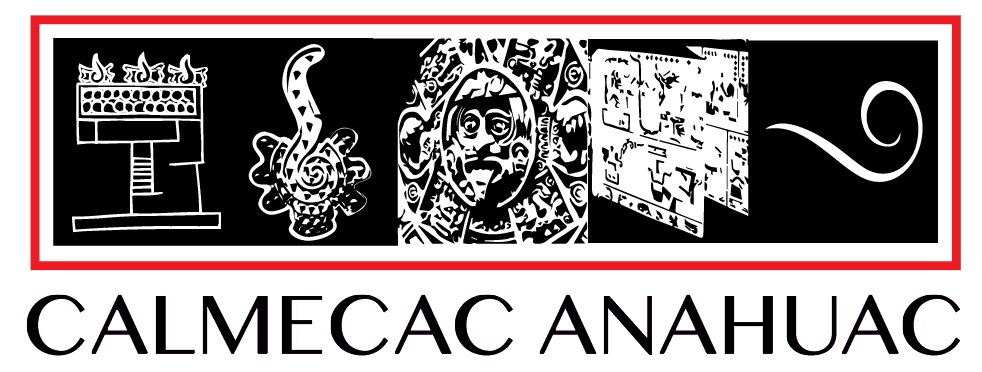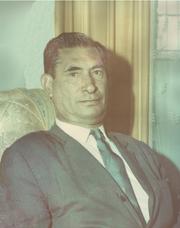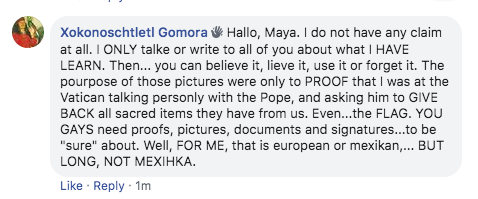“Para reconquistar la libertad que perdimos en el siglo XVI, los mexicanos debemos independizarnos de la cultura extranjera y readoptar la cultura mexicana a fin de que cumplan los altos Destinos de la Razaque son de bienestar y de grandeza.”
Lic. Rodolfo Fernando Nieva López Zenkizka Kuauhtli
What is known today as the Mexicayotl movement was initiated by well-educated Nahuatl speakers during the Mexican Revolution and flourished under the presidency of Lazaro Cardenas. President Cardenas supported Indigenous education in Mexico and many of the founders of the movement worked in the schools he funded. Throughout the years this movement has been referred to by various names including Mexicayotl, Mexicanidad, Neoaztekatl, Aztekayotl, and Nativismo. The Mexicayotl movement is nationalistic in nature and strives to reject European influence along with the promotion of what the original founders claim is the original form of Nahuatl. Many people since the movement was created in the 1920’s have further developed the work of these progenitors. The claims of many of the members of Mexicayotl are problematic because they are purported to be based on oral tradition and as a result they can’t always be cross-referenced with other sources.
The founder of Mexicayotl was Juan Luis Cardenas. In 1920 he formed the organization Ueyi Tlatekpanaliztli Ikniuhtik Aztekatl whereas his primary goal was to spread what he considered to be a pure form of Nahuatl. Together with Fidencio Villanueva Rojas he also worked with the Movimiento Confederado Restaurador de Anauak and Proyecto Aztekatl. At that time, Rojas and Cardenas preferred to use Azteka rather than the more recent Mexica.
The Movimiento Confederado Restaurador de Anauak was co-founded by Ezequiel Linates Moctezuma in the 1950′s. Although earlier organizations were founded by native Mexicans, The Movimiento Confederado Restaurador de Anauak began to incorporate urban mestizos. Moctezuma also founded the Pro-LenguaNahuatl Mariano Jacobo Rojas and Mexihkatlahtolkalli.
Estanislao Ramírez Ruiz co-founded the Movimiento Confederado Restaurador de Anauak and was also a member of the Ueyi Tlatekpanaliztli Ikniuhtik Aztekatl, Aztekatlahtolmelauhkan, and the Kalmekak de Tláhuac. Ruiz claimed he was a direct descendant of the tlahtoani Nezahualcoyotl. In 1925, he became a professor of physics and chemistry. He spent many years disseminating the teaching of Nahuatl which he learned from his parents. In 1951, he ventured into the field of archaeology to participate in approximately 157 experiments to determine the authenticity of the supposed remains of Cuauhtemoc discovered in 1949 by Eualalia Guzman.
Fidencio Villanueva Rojas was a member of Ueyi Tlatekpanaliztli Ikniuhtik Aztekatl and eventually became a professor. Later he became a leading member of the Gran Fraternidad de Amigos Aztekah. Along with the Academia de la Lengua Aztekatl, Rojas taught what he said was the pure form of Nahuatl that was spoken in Tenochtitlan.
In addition to the leaders of the aforementioned organizations, there were many more prominent members who contributed greatly to the development of Mexicayotl in the early years including Nieva Rodolfo López, Ignacio Romerovargas Yturbide, Eulalia Guzman and Paula Gomez Alonzo. Many of the members of the early Neo Aztekah groups were forced to leave their villages due to the conflict between the Zapatistas and the Carrancistas further spreading their work.
In the 94 years since the establishment of the first Mexicayotl organizations under the presidency of Cardenas, many members have worked to disseminate the original message throughout Mexico and the United States. This original message has changed throughout this time period due to various influences. Below is a listing of people who have made major contributions to Mexicayotl:
Major Contributions:
Juan Luis Cardenas – Claimed Ixachilan is the proper Pre-Cuauhtemoc name for North and South America. Thereafter, Mexicanistas affirmed that Ixachilan was authentic and defined it as “extensive territory.”
Robert H. Barlow – Mexican scholar who had ties with Neoaztekah organizations during the first part of the 20th century.
Angel Maria Garibay– Mexican scholar who had ties with Neoaztekah organizations during the first part of the 20th century.
Byron McAfee – Mexican scholar who had ties with Neoaztekah organizations during the first part of the 20th century.
Ignacio Davila Garibi – Mexican scholar who had ties with Neoaztekah organizations during the first part of the 20th century.
Mariano Silva y Aceves – Mexican scholar who had ties with Neoaztekah organizations during the first part of the 20th century.
Estanislao Ramirez –Claimed to have had access to a secret Azteca understanding of the universe that was transmitted from elders in Tlahuac. He was the first to claim that Ometecuhtzintli who had always existed, was the single, invisible creator of the universe.
Miguel Leon-Portilla– Mexican scholar who had ties with Neoaztekah organizations during the first part of the 20th century. Leon-Portilla created the term Ometeotl to combine the Teteo Ometecuhtli and Omecihuatl and also Tonacatecuhtli and Tonacihuatl into one entity.
Carlos Castaneda – Anthropologist who fabricated a story to earn his PhD at UCLA (later revoked) about his meetings with a Yaqui Nagual named Don Juan. His stories about the use of psychotropic drugs such as peyote, shape-shifting, and the spirit world have been incorporated into the Mexicayotl movement by several people including Francisco Jimenez.
Don Miguel Ruiz – Claims to have been passed down the oral traditions of the Tolteca. He popularized Toltec knowledge with the publication of his book, the Four Agreements.
Francisco Jimenez a.k.a. Tlakaelel – Former member of the Movimiento Confederado Restaurador de Anauak. Jimenez claims that In 1943, he was one of the members of a group of youth (along with Pablo F. Garcia, Jose Gonzalez Rodriguez, Rodolfo Nieva Lopez, Aurora Morales, and Fedeico Rojas) who received the mandate of cuauhtemoc from the council of elders from Colhua in Xochimilco. He was the supreme director of In Kaltonal which was the first Indigenous spiritual organization to be recognized by the government of Mexico. He was also one of the first Mexicanists to reject the official history of Pre-Cuauhtemoc Mexico arguing that it is simply a discourse based on the lies of the conquerors and catholic priests who burned indigenous books containing the real records. He also rejects some anthropologists and archaeologists saying they are influenced to perpetuate these lies held by their respective governments. Jimenez incorporated the Lakota sun dance, sacred pipe riutuals, vision quest, and sweat lodges into his practice of Mexicayotl and also promoted the existence of extraterrestrials and other dimensions.
Jose Arguelles – Was the first to associate the familiar image below with the Mayan Hunab Ku which he translates as “one giver of movement and measure.” Arguelles claims he was in the town of Teotitlan del Valle shopping when a merchant told him “see, the ancient Mexicans also knew about Yin and Yang” while showing him a rug containing the aforementioned image as the weaved design.
Arturo Meza – Suggested a calendar count used by many people throughout the Mexicayotl movement today based on his belief that ancient Mexicans divided up time into increments of 6 hours. He was one of the first to combine Leon-Portilla’s construction of Ometeotl with the Mayan Hunab Ku.
Leo Guerra a.ka. Olin Tezcatlipoca – Brought Mexicayotl into the English-speaking world in Los Angeles through his organizations the Chicano Mexicano Empowerement Committee and the Mexica Movement beginning in 1993. Olin’s stated purpose is to “present and promote issues of the Chicano-Mexicano-Mexica people and also to reclaim our Mexica history, identity, land, and language.”
Kurly Tlapoyawa – In 2006, Tlapoyawa published his first book We Will Rise which argues against the existence of human sacrifice, promotes Ixachilan as the correct word for North and South America defined as the great land, and promotes the idea that the first truly developed people originated in Ixachilan. Tlapoyawa has gone on to re-evaluate his previous views and is the founder of Yankwik Mexicayotl, which was created to promote a strong indigenous identity among Chicano-Mexicanos by reappropriating our pre-Kuauhtemok cultures, which are often distorted, unjustly maligned, and dismissed as irrelevant.
Unknown Contributor –In the October 30, 1967 issue of the periodical Izkalotl, the “secret slogan of Anauak” (also known as the “Mandate of Cuauhtemoc”) was published. The mandate is the most well-known prophetic text within the movement today. Mexicanistas insist that this message was announced by Cuauhtemoc on August 12, 1521 one day before the fall of Tenochtitlan.
Since the inception of the Mexicayotl movement in Mexico in the 1920’s under the presidency of Lazaro Cardenas, there have been many unsubstiated claims made by various people which have unfortunately been accepted without question. This has resulted today in a widespread over-reliance on oral traditions and a rejection of valid sources such as archaeological finds and Pre-Cuauhtemoc books. Many people today believe in a creator named Ometeotl, recite the Mandate of Cuauhtemoc, use the word Ixachilan in reference to North and South America, wave the panketzalli flag, refer to the works of Don Miguel Ruiz and Carlos Castaneda as if they are non-fiction, and follow Meza’s calendar count without realizing that these claims are easily discredited simply due to the fact that none of them can be cross-referenced with any other source. The widespread belief that since many of our books were burned and some of the spaniards lied/exagerrated, we must rely on oral traditions for knowledge about our ancestors is simply wrong. Our history is actually very well-documented and major discoveries are being made through the study of Pre-Cuauhtemoc codices, inscriptions, and primary sources. It is time that we let go of these fabricated ideologies, begin to think critically, and reclaim our true history and culture.
Xokonoschtletl Gomora
Has devoted a lot of time and energy trying to recover the Panquetzalli from the Vatican although there is no evidence whatsoever that it even exists and is located in the Vatican. Here is his response from 2019 when asked for evidence that the Panquetzalli actually exists:
This response reveals a lot about how Mexicayotl leaders think. Are we to believe that our great civilizations did not require any proof to achieve all of their accomplishments? Mexicayotl requires adherents to follow with blind faith and to never ask for proof.
Major Mexicayotl Claims Diagram
This diagram shows how many of the Mexicayotl claims discussed above originated and how the ideas of different Mexicayotl leaders, scholars, and new age leaders are related to each other.
Sources:
Mexica Handbook by Olin Tezcatlipoca.
New Religious Movements and Ritual Transformations of the Modern Self June Macklin, Víctor Acevedo Martínez, Elizabeth Gonzalez Torres, ScriptaEthnologica, núm. XXI, 1999, pp. 35-58,
Centro Argentino de Etnología Americana, Argentina
We Will Rise by Kurly Tlapoyawa
The Mayan Factor by Jose Arguelles
Aztekayotl-Mexihkayotl una Aproximacion Historica al Movimiento de la Mexicanid (1922-1959) by Baruc Noel Martinez Diaz. Ciudad Universitaria, Mexico, D.F., 2010.
Mosaico de Turquesas by Arturo Meza-Gutierrez






Permalink
wow very informatove post.
Permalink
Interesting site please keep me informed. Gracias mi Gente!!!
Permalink
This is topic of discussion among those involved in Mexikayotl cultural revival in Lost Aztlan (LA). I like the way your information has been presented. I have often used some of these individuals’ information but am coming to terms with the inaccuracies that they promote. Keep up the good work!!
Permalink
Thanks for commenting Tekolotl. You should also check out this diagram that visually shows the relationships between each of the people mentioned in this article: http://calmecacanahuac.com/charlatansdiagram.fw.png
Permalink
what about tata cusahtli from copalillo guererro and ihuan Tata DAVID VAZQUEZ from el estado de puebla both nahuatl elder different states and made conections and made a conection with the elders of a shiwitl zuni pueblo and Hopi
Permalink
Tata David Vazquez has done some good work in orange county with helping people understand the Nahuatl language. I am not familiar with Tata Cusahtli’s work.
Permalink
Hello! Who is de man in the image?
Permalink
Juan Luna Cardenas. Founder of mexicayotl
Permalink
If you are asking about the photograph on the top, he is Dr. e Ing. Juan Luna Cardenas, the original founder of Weyi Tlatekpanaliztli Aztekatl, unfortunately, only a very few know his work, which is completely absent in this article.
I am the youngest follower of him, I met him in 1987, please visit, Aztekatl.org
Permalink
If you are asking about the photograph on the top, he is Dr. e Ing. Juan Luna Cardenas, the original founder of Weyi Tlatekpanaliztli Aztekatl, unfortunately, only a very few know his work, which is completely absent in this article.
I am the youngest follower of him, I met him in 1987, please visit, Aztekatl.org